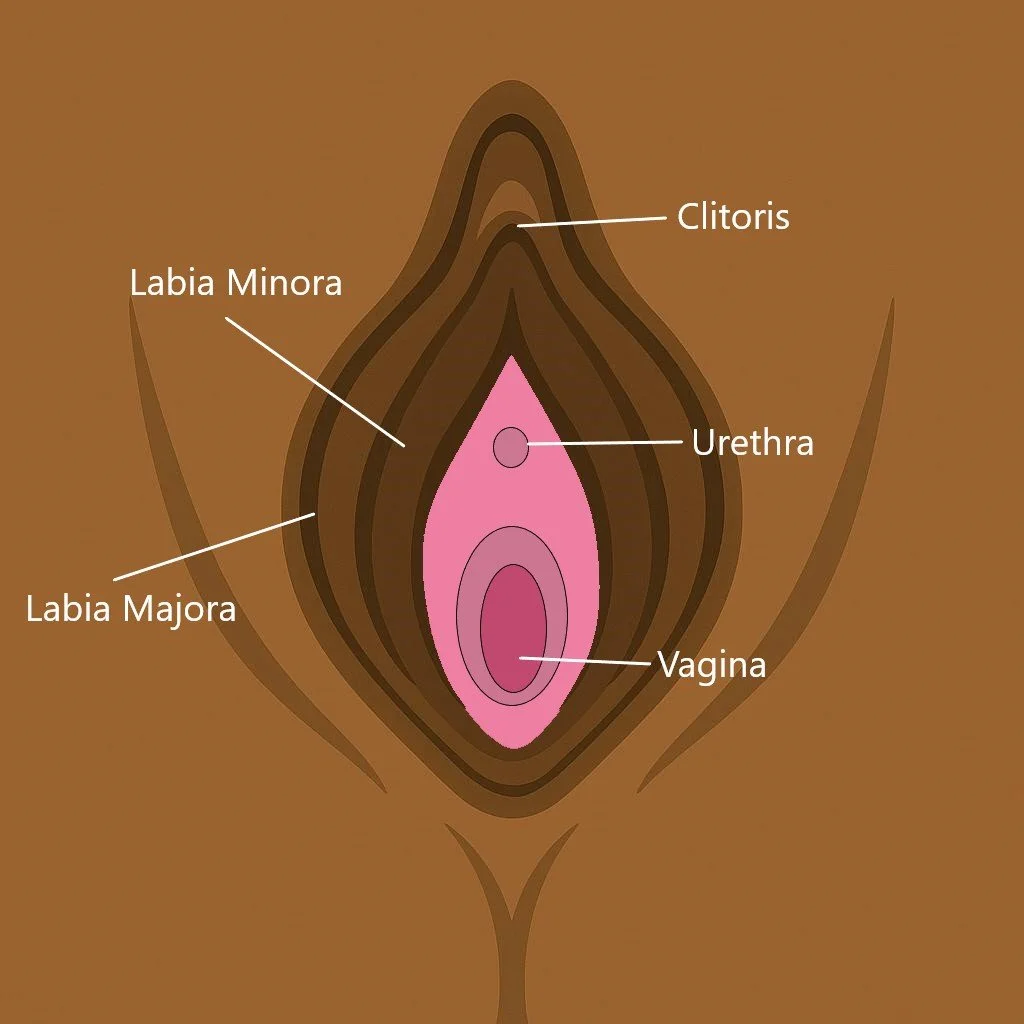Down There, Up Close: A Guide to the Bits Below
So, you’ve got a vulva. Or you’re just vulva-curious. Either way, welcome to the tour. No shame, no weird old textbook diagrams, no confusing terms like “vestibule” without an explanation. Just a little anatomy 101 for the parts most of us weren’t properly introduced to — even though we live with them every single day.
Let’s Start with the Basics: What Is a Vulva?
You’ve probably heard the word *vagina* used to describe everything between your legs. But that’s actually a bit like calling your whole face a nostril. The vagina is just one part — the inner canal that leads to the cervix. Everything on the outside? That’s your vulva.
Your vulva includes the labia (your outer and inner lips), the clitoris, the urethra (yep — that’s where your pee comes from), and the vaginal opening. All of it matters. All of it is normal. And all of it is yours.
Meet the Labia
They come in every shape and size you can imagine. Seriously, no two are alike — but all are perfectly normal.
Since your body is poetry, maybe this will help:
Some are big, some are small,
Some don’t look like lips at all.
Some are pink and some are brown,
Some sit tight and some hang down.
The outer lips are called the labia majora, and they’re usually more like cushions — something you might just consider part of your groin. The labia minora are the inner lips — thinner, softer, and often a bit more visible. They might peek out, fold in, or flutter to the side. It’s all good
Clitoris: More Than Meets the Eye
Let’s talk about the queen herself, the clitoris.
She sits on top of the throne (aka the vulva), just underneath the pubic bone.
She is one of the most misunderstood and under-celebrated parts of the body.
The little nub you see on the outside is just the tip of the iceberg. Most of the clitoris lives inside your body, with legs (called crura) that extend several inches deep. But what you can see is the glans of the clitoris, hiding under a soft little flap called the clitoral hood — like a teepee, a tiny tent, or a protective dome.
*...so that’s why they can never find it...*
The clitoris exists solely for pleasure. It has over 8,000 nerve endings — which is a lot of talent in one tiny structure. So yes, it deserves some attention and respect.
What’s Inside: The Vagina and the Cervix
So what’s actually inside there?
Most of the vagina isn’t visible — it’s a muscular canal that extends up and back from the vaginal opening. It’s designed to expand during sex, accommodate tampons, deliver babies, and handle whatever else life (or gravity) throws your way.
At the very end of that canal is the cervix — the lowest part of the uterus. You won’t be able to see it on your own, but it plays an important role.
Think of it as the bouncer at the entrance to the uterus. It controls what goes in and out: letting menstrual blood out, while keeping harmful bacteria from getting in.
It’s also what your doctor is looking for when it feels like they’re deep sea diving with a speculum.
The Urethra: A Whole Separate Hole
You actually have a whole separate hole for peeing — it’s called the urethral opening, and it sits just below the clitoris and above the vaginal opening. It’s small, often hard to see without a mirror, and sometimes gets confused for other things.
Think of it like this: if your clitoris and vaginal opening were two houses on a block, the urethra is the mailbox in between them. Tiny, easy to miss, but serving an essential function.
The Perineum (a.k.a. the Middle Zone)
That little stretch of skin between your vaginal opening and your anus? That’s called the perineum. It’s like the cul-de-sac of your vulva — not flashy, but important. It can stretch during childbirth and is a common site for irritation, chafing, or tearing.
What About Color, Texture, and “Normal”?
Here’s the thing: there is no normal.
Vulvas can be:
- Light pink, deep brown, or a mix of colors
- Smooth or textured
- Symmetrical or not
- Hairy, bare, or stubbly
The only thing that isn’t normal? Feeling like yours is wrong because it doesn’t look like someone else’s.
That being said, if you're noticing your vulva change from what you're used to — or have a new or concerning spot on it — then that's something that deserves a doctor’s attention.
Why Knowing This Matters
Understanding your own anatomy is empowering. It helps you:
- Speak up at doctor’s appointments
- Spot when something’s off
- Advocate for your pleasure
- Feel a little more at home in your own skin
You don’t need to memorize every Latin term. But you do deserve to know what’s what — and to feel confident talking about it.
Because this isn’t someone else’s body.
It’s yours. And it’s about time you got a proper tour.

